This was published 5 years ago
Longarone, Italy travel guide: The town wiped out by an 'inland tsunami'
By Alison Stewart
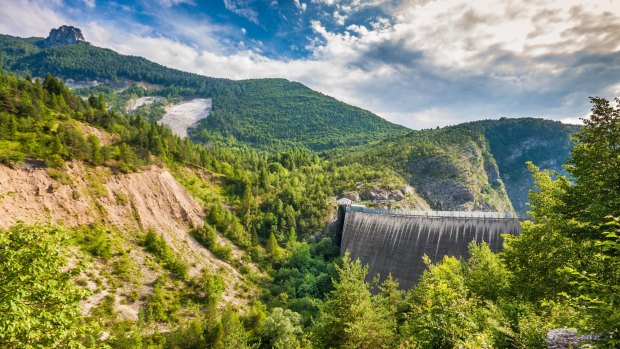
Vajont Dam, Italy.Credit: Alamy Stock Photo
Dark history exists in many places – wars, natural disasters, evidence of human greed, immorality and venality. Some places choose to forget. Longarone in Italy's northern Dolomites chooses to remember. How could it not? About the time of President John Kennedy's assassination, the entire town, along with four others, was destroyed by a man-made megatsunami that killed about 2000 people, 1400 from Longarone alone.
The Alpine town 100 kilometres from Venice, set between jagged needle peaks, is a memorial to human resilience. It is beautiful again, rebuilt, set in the long valley of the Piave River facing the mountain that brought disaster.
There are "places of memory" everywhere you go in Longarone: the memorial church designed by eminent 20th-century Italian artist Giovanni Michelucci, the Museum Longarone Vajont's "Attimi di Storia" (moments of history), the Vajont memorial graveyard at nearby Fortogna, the garden of solidarity and the square of the monumental church where people may gaze directly across the valley to Mount Toc. The museum is a mandatory destination for all who visit Longarone. It details "a tragic tale about water."
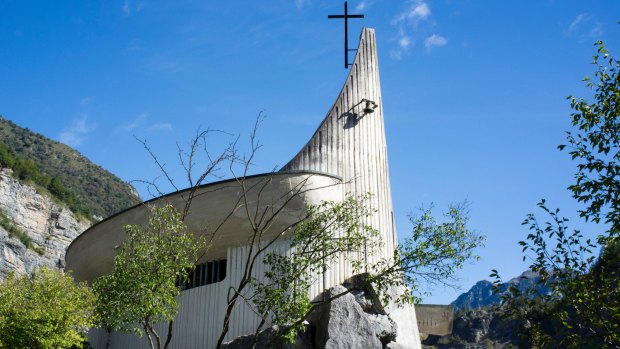
The commemorative chapel near Vajont dam.Credit: Alamy Stock Photo
At 10.39pm on October 9, 1963, as people slept or prepared for bed, there was a "roar and then the silence of death" as a section of the mountain the size of a small village broke away – the largest landslide ever recorded in Europe. It dumped 260 million cubic metres of earth, rock and forest into the deep and narrow Vajont Dam, the world's highest double-curvature arch dam at 262 metres, which was being built to generate hydroelectric power for the country's northern industrial cities.
The dam was built despite authorities knowing this was an area of unstable geology, prone to earthquakes. They even charged an investigative journalist with "diffusing false and biased news in order to disrupt the public order".
The displaced 50 million cubic metres of water rose in a 240-metre-high tsunami and burst 100 metres over the dam wall into the Piave Valley below. It took four minutes for the wave, estimated to contain twice the energy of Hiroshima's atomic bomb, to flatten the valley. The water was so powerful that the victims were mostly found naked, their clothes ripped off by the blast.
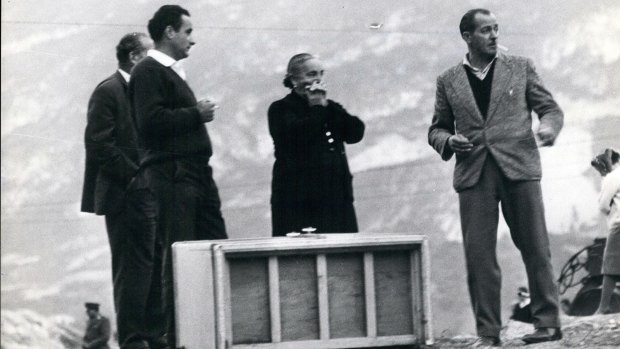
The tragedy of the Vajont dam disaster.Credit: Alamy
The water left a crater 60 metres deep and 80 metres across on the valley floor. The now unused dam, which remained intact, is open for visits. We have ridden in to Longarone on the Pieve di Cadore to Belluno leg of our 350-kilometre cycle from the Dolomites to the Adriatic Sea. The town demands you linger to consider the folly that placed "progress" above human beings.
After the tragedy, it was initially thought Longarone should be rebuilt elsewhere. Says the Vajont museum pamphlet, "The 'itinerary of memory' is a harsh path for the inhabitants of Longarone …" The town, however, was rebuilt exactly where it had been, to honour the dead and remember the failure of governance, the greed, the desire for economic growth at any cost.
The museum, opened in 2009, shows Longarone frozen in a happier time. There are four sections – Longarone's ancient life, the dam construction, the catastrophe, and the rebuilding, plus an excellent documentary. There are photographs of the local soccer team, of a class full of children having their first communion, village festivals with people in traditional dress, the village ice-cream shopkeeper and his twisted sign. Many in the photos died. There are recovered items – a soup tureen, battered plates, bottles and glasses, a helmet, a biscuit tin and water-stained postcards, an entire world changed forever.
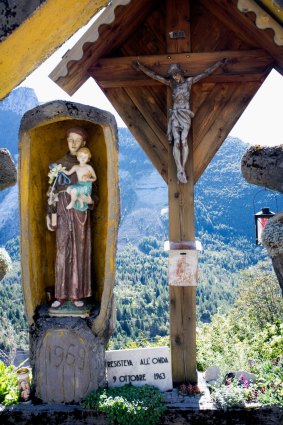
The wave touched the village of Casso at 140 metres above the dam.Credit: Alamy
The information is in Italian, but the exhibits' poignancy is universal, particularly in the twisted strips of metal representing the 1910 victims. There were many landslides in the four years before the disaster and many expert warnings. The final engineer's warning spoke of "the fissures in the terrain, the road dips, the obvious bending of the trees, the large crack forming in the landslide hazard area … everything makes one think for the worse … may God help us."
A four-year trial ended in lenient sentences; two engineers received three years' jail. The state was accused, accuser and judge.
Beyond Longarone, we cycle along forest paths beside the river, with the sharp mountains rising on either side. Danger signs still warn of "the possibility of sudden flood waves".
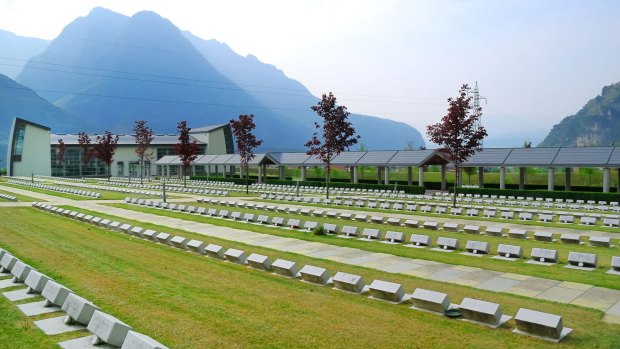
The cemetery at Longarone.Credit: Alamy Stock Photo
The Piave, known as Italy's "sacred river", is the location of many World War I battles. Longarone was where Rommel captured an entire Italian division of 10,000 with only a few companies. The town and its river valley, location of so many tragedies, deserves its peace.
TRIP NOTES
Alison Stewart was a guest of UTracks
Emirates flies daily from Sydney and Melbourne to Venice. See emirates.com Trenitalia trains connect to Bolzano, see trenitalia.com
CYCLE
UTracks' eight-day, self-guided Cycle the Dolomites to the Adriatic Sea costs from $1550 a person twin share and from $1730 a person twin share with e-bike. Includes breakfast, accommodation (three or four-star), luggage transfers, route notes, maps, 24-hour support. See utracks.com
Sign up for the Traveller Deals newsletter
Get exclusive travel deals delivered straight to your inbox. Sign up now.